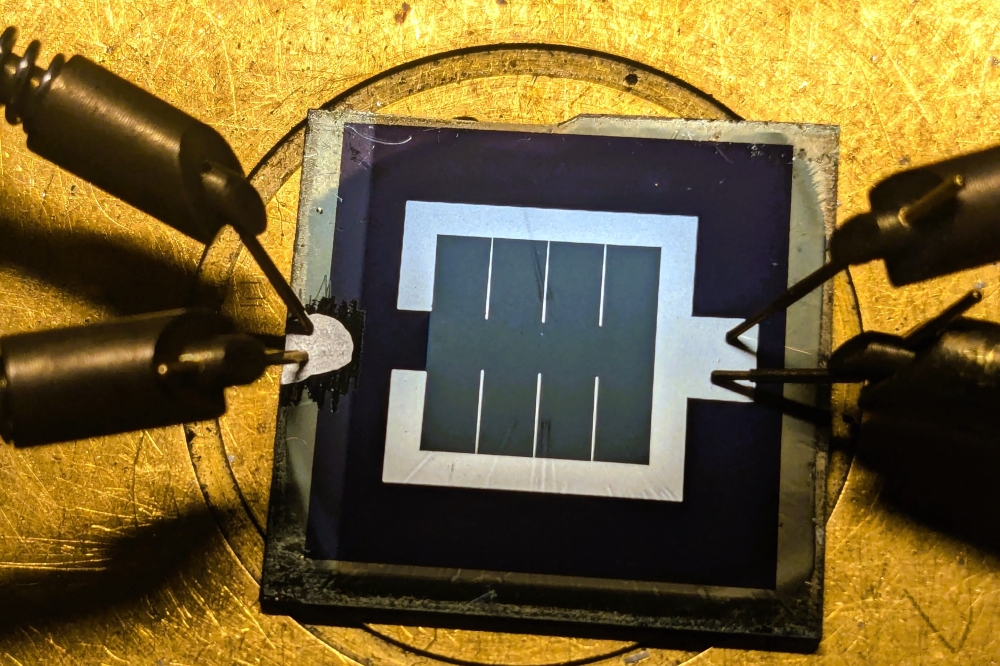MACOM set to mass market GaN

Will MACOM's latest GaN-on-silicon transistor nudge GaN from niche to norm, asks Compound Semiconductor.
Will the latest 100W GaN-on-silicon transistor open new markets for the GaN technology?
With a spotlight on GaN, September was quite a month for MACOM. Celebrations of shipping more than one million GaN-on-silicon RF power devices were swiftly followed by the news that the company was sampling 100W GaN-on-silicon HEMTs.
The latest continuous wave wideband transistor, designed for DC to 2.7GHz operation, boasts a 70% drain efficiency, which appears to have got many RF industry players excited.
As MACOM highlights, the latest 100W transistor can now deliver a performance to rival more expensive GaN-on-SiC, with a cheaper volume production cost structure than LDMOS.
"We've made a breakthrough in drain efficiency which is now 10% better than the best of the LDMOS parts, targeted at similar applications in ISM frequency band applications," highlights Mike Ziehl, vice president of RF and Microwave. "So for the same given CW power, you have less heat dissipation and can reduce the costs of cooling and power supplies."
"These 100W devices have caused some excitement, particularly in the RF Energy community," he adds.
MACOM manufactures both GaN-on-silicon and GaN-on-SiC HEMTs, and from word go has firmly outlined where it believes each technology belongs.
Due to the high cost of growing SiC boules, this flavour of transistor will service low-volume, niche applications such as broadband electronic warfare jammers and radar systems, where the emphasis is also on performance.
In contrast, GaN-on-silicon has already been proven in military communications applications and MACOM is certain that cost-sensitive, high volume applications will embrace the technology on eight inch wafers. Indeed, the company is in the process of scaling manufacture to larger wafer sizes.
"We have long been a leader in L-band and S-band pulsed power radar and customers looking for the ultimate in performance still prefer GaN on SiC," says Ziehl. "But for higher volume, commercial applications then we think GaN-on-silicon has to be the solution."
Right now, MACOM has its eyes on RF energy applications, such as the magnetron-powered microwave oven. In late December, Freescale caused a furore when its delivered the first silicon LDMOS FETs to replace the mighty magnetron in the microwave oven. But the excitement could be short-lived.
"Solid state devices can be used to control cooking much more accurately than a magnetron, but the LDMOS transistor is only 60% efficient so you are giving away efficiency in today's systems," points out Ziehl. "Our Gen4 GaN-on-silicon transistor is much closer in efficiency to the magnetrons used in existing systems, which will make a big difference to manufacturers of the end product."
Thermal concerns
Other new markets for the 100W GaN-on-silicon HEMTs include automotive ignition and plasma lighting, but what about base stations?
GaN-on-SiC power amplifiers are beginning to uproot LDMOS devices in high capacity base stations of 4G LTE networks. However, concerns over silicon's poor thermal conductivity, relative to SiC, could slow demand for GaN-on-silicon versions.
As Qorvo wireless infrastructure general manager, Sumit Tomar, told Compound Semiconductor, in late September: "Our customers are worried that GaN-on-silicon power amplifiers cannot dissipate heat as efficiently."
Ziehl disagrees. While the vice president did not want to detail customer discussions, he highlighted: "This is not a materials discussion on whether its silicon or silicon carbide, this is a product discussion."
Indeed, as Ziehl highlights, during GaN-on-silicon HEMT manufacture, MACOM thins its wafers, optimises the die attach and die attachment methods, die layout and more.
"We pay attention to every step of transistor assembly, and even at 100W, I can show you our GaN-on-silicon parts that have a better thermal rating than other manufacturer's 100W GaN-on-SiC parts," he asserts.
"We have customers that come to us and say, 'well I need a SiC transistor as its thermally superior', and then we educate them as to what our GaN-on-silicon product does compared to other products in the market at similar power level," he adds.
So where next for MACOM's GaN-on-silicon technology? According to Ziehl, the 100W HEMTs are only the first in a family of 200W and 300W transistors; these are expected to sample late this calendar year.
What's more, the company also expects its first GaN-on-silicon devices to enter high volume production in 2016, which will surely mark a watershed for commercial GaN. Still the vice president remains balanced.
"This is all about offering the right choice of GaN to the application. If you look at RF energy, it's higher volume so GaN-on-silicon is the solution, but for electronic radar, its GaN-on-SiC," he says. "We offer what meets our customers' challenges, and sometimes they buy both."


































